A drill press is a type of power tool that’s used for drilling holes or driving screws. It’s typically used in industrial and manufacturing applications.
Additional PPE may be required based on the specific application. For example, if noise levels are high enough to require ear protection, then workers must wear noise-canceling earmuffs or headphones. If there’s a risk of sparks igniting nearby materials, then flame-resistant clothing may be necessary.
Finally, it’s also important to make sure that workers don’t have any loose clothing or jewelry that could get caught in the drill press. Hair also needs to be tied back so it can’t get caught in the machine or accidentally fall into it while an employee is working on it.
Table of Contents
What PPE Must Be Worn When Using The Drill Press?
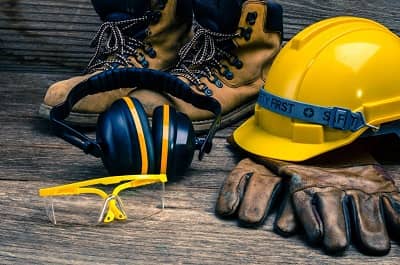
When it comes to safety equipment, you can never be too careful. It’s important to take the right precautions when using the drill press so that you don’t injure yourself or others.
To prevent dust from entering your eyes, you may also want to wear an adjustable face mask. A full-face shield is another option.
When operating a drill press, the only piece of personal protective equipment (PPE) that is absolutely necessary is a pair of high-grade, shatter-proof goggles with side shields. Eye injuries are known to occur when metal shards or debris are shot from underneath the drill.
Goggles with side shields should be worn whenever using power tools and should never be removed until the tool has been turned off. The operator should also remove any jewelry and tie back long hair so that it doesn’t get caught in the moving parts of the drill press.
When working with wood on a drill press, each type of wood is different and may require additional PPE. Dust masks should be used if working with hardwood, because it produces fine dust that can be harmful when inhaled.
A respirator should be used if working with plywood, because it has glues that can produce dangerous fumes when heated. When working with softwoods, such as pine or fir, there is no need for these additional pieces of PPE since they don’t produce harmful dust or fumes.
Aside from eye protection, you should use a dust mask to keep wood dust out of your lungs and noise-canceling ear muffs to protect your ears from excessive noise. There’s no need for gloves. If anything, gloves can get caught in the moving parts of the drill press, which could cause serious injury.
It’s recommended that you wear earplugs or earmuffs for protection against loud noise, but this isn’t required. If the noise level of your drill press bothers you — and if it’s really loud — this is a good idea.
You may also want to wear work gloves when operating a drill press, but this depends on whether or not it would interfere with your grip or dexterity. Also, some types of gloves can make your hands sweat more than they normally would.
Additionally, it is also a good idea to wear leather gloves if handling sharp pieces of metal, as well as ear protection if working in an especially noisy environment.
It is also recommended that steel-toed boots be worn around a drill press for leg protection in case something heavy falls on them.
Clean your drill press table with a soft rag and a distilled white vinegar-soaked cloth to avoid leaving any abrasive residue on the table that could scratch the surface. If the machine is dirty and covered in oil, you may need to use a mild dish soap with warm water to gently clean the surface.
Finally, in terms of clothing, avoid billowy sleeves that could get caught in the machine while it’s running. Also, don’t wear loose jewelry or a scarf because they could get caught and create a dangerous situation.
How Do You Maintain a Drill Press?
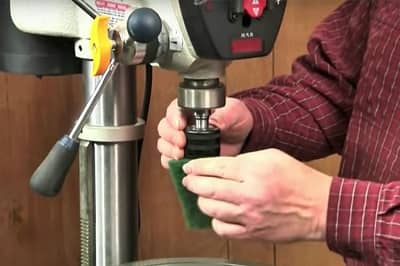
A drill press is a stationary machine that holds and positions the work piece, and uses a rotating cutting tool to drill holes.
The following safety rules apply to all drill presses:
- Never wear gloves while using a drill press. Gloves can catch on moving parts and pull hands into the machine. To avoid burns, turn off the drill press before removing work pieces.
- Always use the correct PPE when operating a pedestal drill. PPE should include: Safety Goggles Steel capped footwear Hearing protection Dust mask or respirator Apron
- All belts and pulleys must be guarded.
- If you notice any unusual vibration or noise, immediately turn off the machine, unplug it and inspect for damage or misalignment before restarting it.
- Once switched on, allow the drill press to reach full speed before starting to cut.
What Is The Correct PPE Required When Using a Pedestal Drill?
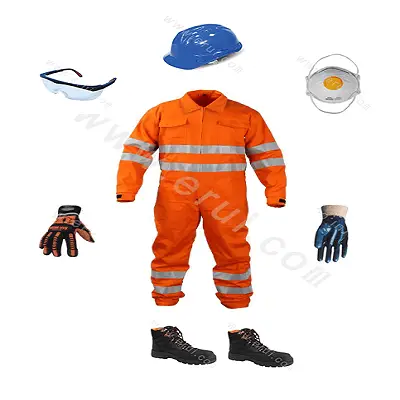
PPE include safety goggles, hearing protection, and work gloves. Sometimes additional PPE is required, depending on the application.
To maintain a drill press, the chuck needs to be cleaned with a brush and lubricant (usually oil), the table needs to be wiped down and lubricated, and any other moving parts should be inspected for wear.
When using a pedestal drill there are several steps that must be followed: reading any applicable manuals, dressing appropriately, ensuring that all safety guards are in place, checking the work piece for nicks or burrs, ensuring that the workplace is clean, clearing out unnecessary items from the work area, clamping the work piece down securely, conducting a “dry run” of the drill press to ensure that everything is working properly and to avoid damaging the work piece or drill bit.
Should Gloves Be Worn While Using a Drill Press?
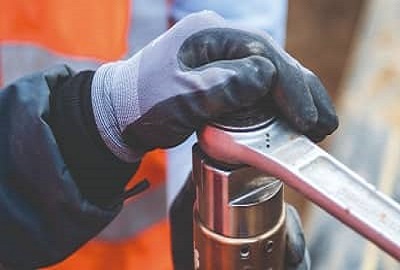
Gloves should be worn while using a drill press. Gloves provide protection from the moving parts of the drill press.
Safety glasses should always be worn when operating a drill press to protect your eyes from any flying debris.
Always wear safety shoes when using a drill press, as they provide protection against falling objects or tripping and falling which can cause injury to your feet or legs.
Protect all skin with long pants, long-sleeved shirts and closed-toed shoes.
What Should You Do When Operating a Drill Press?
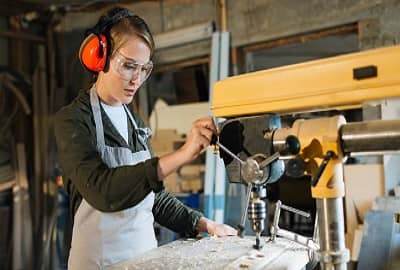
While the drill press has been around since the late 19th century, there are still many accidents that occur each year due to not using the proper safety procedures. This is mainly because of two things: 1) A drill press has numerous moving parts and 2) The operator often ignores safety because they’re in a hurry or think they know better.
To prevent injury or possible death, there are 5 necessary steps to follow when operating a drill press:
1. Read the owner’s manual from cover to cover prior to operating the machine. The owner’s manual should be kept in close proximity to the machine for reference for all operators. Be sure that you understand how the machine works and what the safety features are before attempting to operate it.
2. Make sure that all safety guards are in place and functioning properly. Also, make sure you have your personal protective equipment (PPE) on at all times including hearing protection, eye protection, leather gloves, steel-toed shoes or boots and a work apron or jacket.
3. Set up the work piece correctly and secure it solidly so that it does not move while being worked on. Never allow your hands to get close to the spinning bit when drilling, especially when drilling at high.
Do You Have to Wear Safety Equipment At Drill Press?
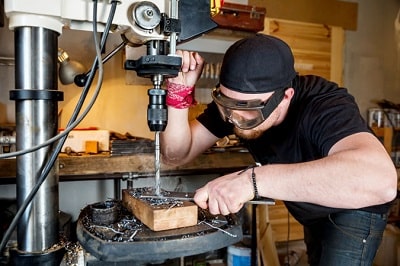
The drill press is one of the most reliable pieces of equipment in any workshop. It is a versatile tool that can be used for drilling, reaming, countersinking, and tapping. Operating a drill press requires training and practice to develop the skills necessary to use it safely and effectively.
According to OSHA, anyone using a drill press is required to wear eye protection, a dust mask and gloves if the material being drilled produces dust. If you are drilling metal, always wear gloves because the metal may get very hot from friction. If your drill press does not have a guard for the spinning bit, you should also wear a helmet with a face shield.
What Are The Safety Precautions When Using a Power Drill?
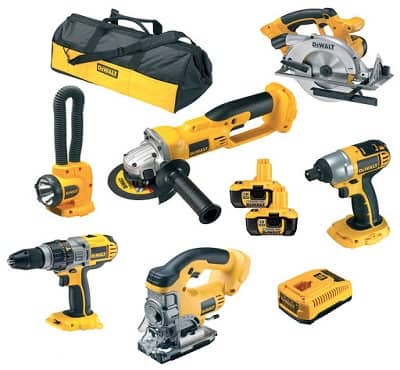
Power drills must be used with caution in order to prevent serious injuries from occurring. Always follow manufacturer instructions to ensure safe use of your power drill.
- Wear eye protection – flying debris from drilling operations can cause serious eye injuries.
- Do not wear loose clothing or jewelry – these may get caught in moving parts of the drill press and cause injury.
- Make sure electrical cords are away from work area – avoid tripping over cords or getting them caught in moving parts.
- Keep children away from machine while in operation – they should never be allowed to operate a drill press or other power tools.
- Make sure you are properly trained to use this machine – if you are unfamiliar with how to use this machine, ask for help from your supervisor or instructor.
What Are The Requirements For Personal Protective Equipment (PPE)?
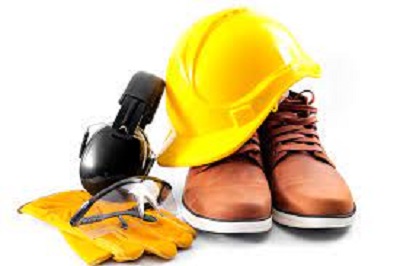
When operating a drill press, safety goggles and safety gloves (thick and leather) are required to prevent eye injury or hand injury. A dust mask or respirator is recommended when drilling aluminum or other dust-producing materials.
While working on your project there may be hazards that require Personal Protective Equipment (PPE). Examples include but are not limited to: eye protection for welding, face shields for grinding, N95 respirator.
How Do I Ensure a Safe Work Area for My Drill Press?
Make sure that all guards are on and functioning properly before operating the machine. Also make sure that there is no debris, water, or anything else on the table where your work will rest during drilling. Keep children and pets away from the area while drill pressing.
Frequently Asking Question
1. How Do You Clean a Drill Press Column?
A damp cloth is used to clean the column of the drill press. The cloth must be as dry as possible before use. The column should not be wiped with any kind of liquid cleaner or water. The column should be kept free from moisture and dust at all times.
2. What Do You Use To Clean a Drill Press?
A damp cloth is used to clean the main body of the drill press, but no liquid cleaner or water should be used. Keeping the tool-free from moisture and dust will help to avoid rusting and other damage that can occur over time.
3. What Is The Spindle Travel On a Drill Press?
Spindle travel is measured from the tip of the chuck to the top of the workpiece being drilled, which is roughly half an inch for most drills. Spindle travel can be adjusted by turning a knob on the side of most power tools, such as an electric screwdriver or hand drill (sometimes referred to as “the crank”).
4. What Three Operations On The Drill Press Can Be Performed?
As with other tools in the workshop, metal shavings and fine grime can build up over time. Rather than simply wiping down the drill press column, you must use oil to remove sticky metal remnants.
Step 1
Put on a pair of rubber gloves and safety glasses.
Step 2
Moisten a shop towel with kerosene or a biodegradable degreaser. Wipe down the entire column, including the inside of the pillar. Turn the column several times to ensure that you remove all metal remnants.
Step 3
Wipe off any excess degreaser with another shop towel soaked in water. Allow the drill press to dry completely before using it again.
Wrap Up
A drill press is a stationary power tool used to drill holes of various sizes through materials of various thicknesses. Used in industrial, commercial, and manufacturing applications, the aim of the drill press is to make rounded holes quickly and precisely.
The drill press is a high-speed machine that can be very dangerous if used incorrectly. It is not only important to learn how to use a drill press, but also how to set one up and take safety precautions when using one.
